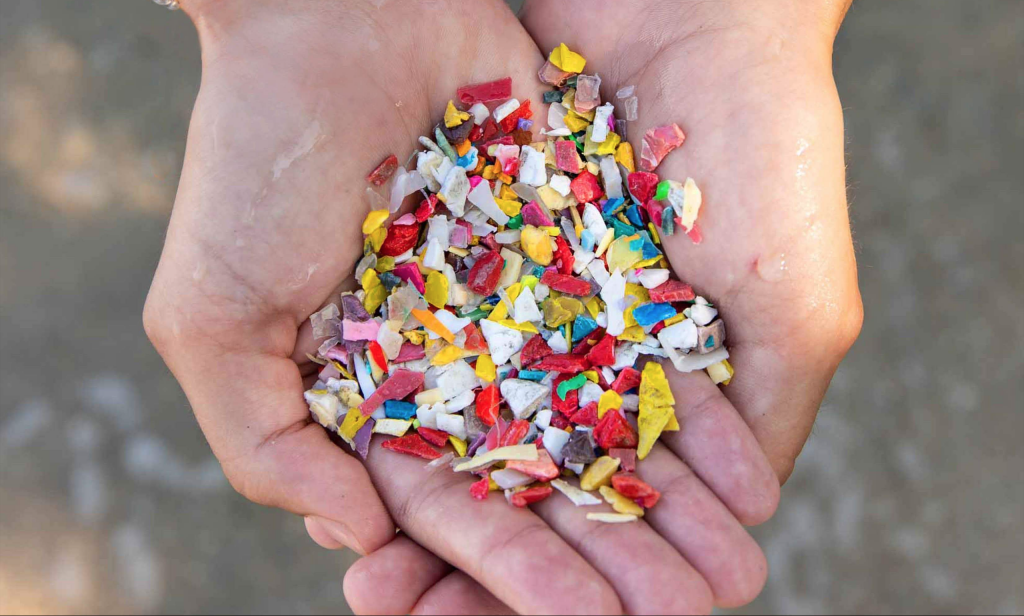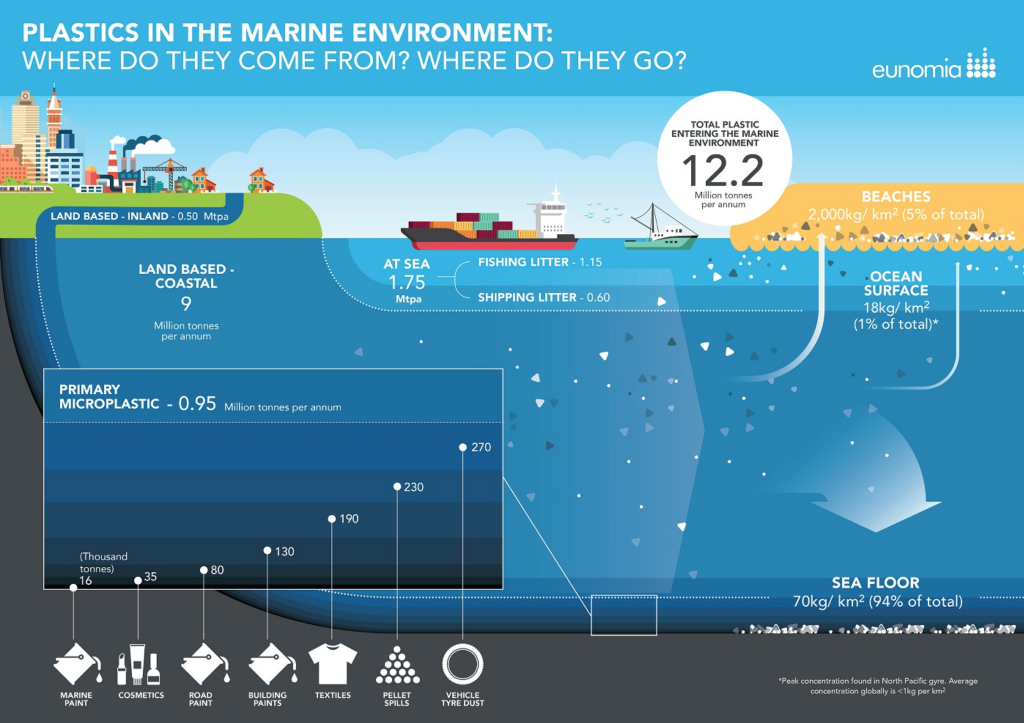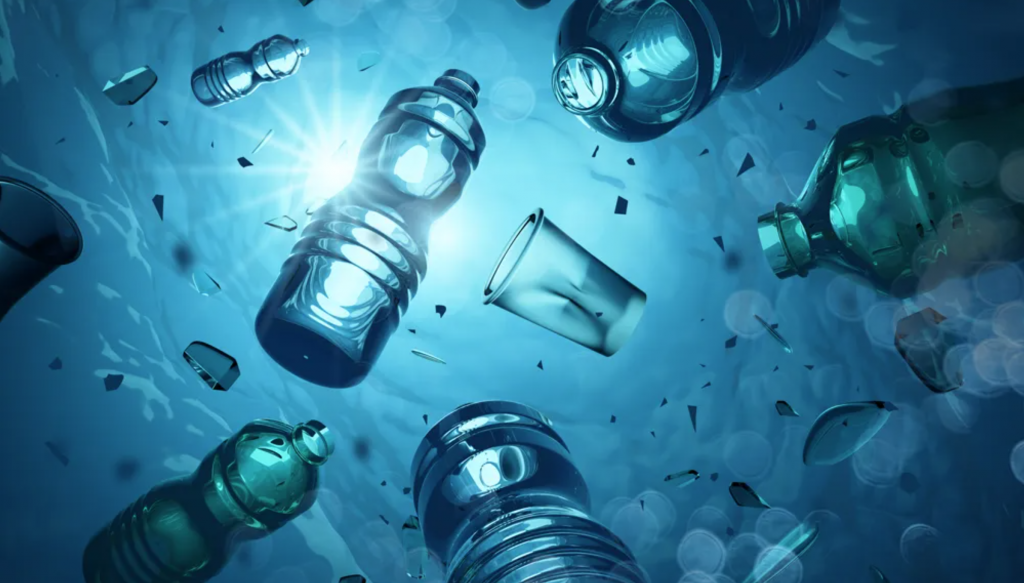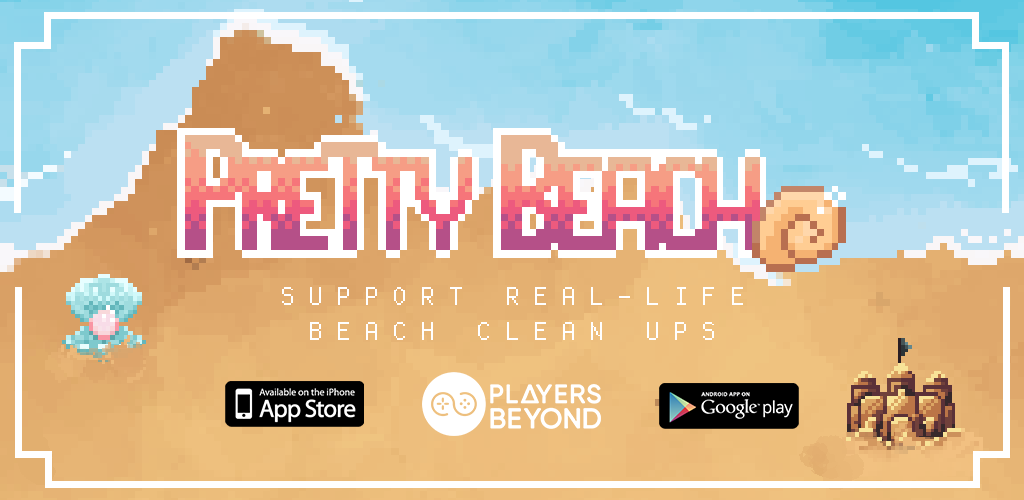Microplastic: Our dangerous companion
If you look around, what do you see? A book, your TV, your smartphone – of course. I’m sure at least one thing around you is made of plastic. It is an incredibly flexible material, there is no doubt about that. However, today, there is almost no place where you don’t find it.
Do you have a smartphone case? Most of them are made of some sort of plastic. Do you like tea? Yup, tea bags contain plastic. Even if you like breathing (well… who doesn’t?) you might inhale tiny particles of plastic.
Now the example of floating plastic particles in the air might be a very visual image of microplastic. But not every microplastic is super tiny. And lately a friend of mine was super confused why I called a small plastic pellet microplastic. “I can still see it”, he said. “Shouldn’t it be way smaller to be called like that?”
In fact, that’s an excellent question. That’s why I dug a little deeper to find out:
What is microplastic, why is called like that and is it the real motherf*cker?
Spoiler: It’s tiny plastic particles, it’s just because the word “micro” conveys the fact that you talk about tiny particles – and yes it is!

What are Microplastics and Nanoplastics?
Yes there are even smaller particles than microplastic. Plastic doesn’t rot or dissolve into nature like organic material. It only breaks down into smaller and smaller particles. Where particles with a diameter of less than 5 mm (0.2 in) are called microplastic, particles with less than 1000 nm (0,0001 mm) are called nanoplastic. This is 100x smaller than average human hair.
On the one side there is primary microplastic. This is industrial produced plastic, like little PE (Polyethylene) pallets. Basically it was intentionally produced to be further processed into other products.
Then there is secondary microplastic. This is created when plastic products break down due to environmental influences.
While the term microplastic is commonly used for small plastic particles, the term nanoplastic is still under debate.
Nevertheless, these particles lie around, float around and fly around until we either collect or eat them.
So where do we find Microplastic and Nanoplastic?
Studies of the International Union for Conservation of Nature estimate that 35% of the microplastic found in the ocean comes from textile fibers. In a moment I’ll tell you how it gets there.
Other great sources if you want to create or find microplastics are: Tire abrasion, pellet losses during production, release during waste disposal, release on construction sites, just to name a few.
In a cosmetic tube with peeling lotion more than 300 000 microparticles were found. These microbeads have the sole purpose to help getting rid of old skin cells and then go down the sink contaminating the water.

How does microplastics and nanoplastic get into the environment?
Some plastic particles go down the sink as peeling microbeads, others as textile microfibers every time you wash your clothes.
Of course many wastewater treatment plants filter out the plastic so it doesn’t get in our drinking water. However it is estimated that only 97% is filtered out. 3% contaminates our groundwater. Then there is sludge of those sewage treatment plants. The sludge is used as fertilizer. This way micro- and nanoplastics get into our water, our rivers and then into our ocean.
During their research at the Donau, one of the biggest and longest rivers of Europe, scientists found more micro plastic than fish larvae.
Also in our air there is plastic. Due to abrasion some plastic particles get into the air and come down with snow or rain. The wind then spreads it everywhere. We even inhale some of those particles.
And that’s not everything. The plastic that is in the ocean gets eaten by fish, or they break down and then get eaten by smaller fish. Thus entering our food chain. Some animals starve because they have a belly full of plastic which stops their appetite. Even though the plastic is in the fishgut (which most of us don’t eat) we definitely eat sea salt, clams or other sea food that still contain tiny particles of plastic.

What are the effects?
Well, of course polluted areas are definitely not instagramable. However this is the smallest problem. Plastic is a key driver to global warming since it releases greenhouse gases into the ocean when it breaks down. Thus heating up the ocean. This not only speeds up the climate crisis but is also a risk for coral reefs that are home for fish and algae that help produce the oxygen we breathe.
Like I said before, many animals eat those empty plastic calories and starve. Some of them, who are lucky enough to not starve, get caught by fisherman and then end up our plate, thus entering our body. Nice. A study even found plastic in our poop thus estimating we eat a credit card’s worth of plastic every week. Good news: we poop it out. Bad news is we don’t know much about the effects. In general, the WHO reports that plastic below a size of 150 µm (0,015 mm) is harmless to our bodies and that we simply excrete very small particles. “The WHO study gives the all-clear too early,” says Nadja Ziebarth of the Bund für Umwelt- und Naturschutz Deutschland (BUND). She also mentioned there were many factors the WHO forgot to take into account with their statement.
However researches say plastic in our body can lead to inflammation of the intestine, liver tissue damage and even cancer. There are also studies where plastic is linked to infertility, changes in the DNA, and most importantly: small penises. Just saying.

What can I do?
Even though it seems like plastic is everywhere and won’t go away anytime soon there is much you can do!
First of all you need to be aware of what contains plastic and then start to avoid it as best as you can. There are some great alternatives for most of the products nowadays. This doesn’t mean you should throw everything away. It is just crucial that we reduce the production of plastic to a minimum.
This brings me to my next point. If you feel like you would like an alternative for something, ask the shop and search online. Of course nothing will change if only you want an alternative. But if many of us ask and the demand is high enough, the incentive for coming up with (and selling) plastic alternatives will be higher.
Another thing you can start alone or with a group is a cleanup. Just go out and start picking up some trash. Especially in a group cleanups can be really fun. There are also many great organisations you can join like the Surfriders Foundation, Sea Shepherd or the 5 Minute Foundation.
We’ve therefore partnered up with the 5 Minute Foundation so that you are able to be part of a cleanup wherever and whenever you want! With our games, like Pretty Beach, you can play and have fun. The money we get from the ads help to finance and realize real life beach cleanups. You pretty much donate without using your own money. Sounds awesome?
Just click here and start being a hero.
And last but not least: Raise your voice for political change. It is a no brainer that we need backup by our political leaders and the government. They are responsible to install regulations that make it more attractive for business to provide and invest in plastic alternatives.

Conclusion
Today we produce more than 600% more plastic than 1975. More than 350 million metric tons! We’ve come a long way since its invention to replace materials like ivory. And even though plastic has lots of advantages, like its flexibility and longevity, it can be super dangerous for us and our environment.
Plastic is a fascinating material, for sure. We use it everywhere. And what goes around, comes around. Unfortunately we’ve created a material we don’t know the effects of. What we can see now is that the current effects of plastic are not pretty.
The good thing is: you, I, we all can do something to stop this!
- Start being aware of what contains plastic
- Start to use it as long as you can and avoid buying new plastic
- Start looking for plastic alternatives
- Start buying plastic alternatives
- Start (joining) a cleanup
- Start playing our games 😉
- Start raising the demand for plastic alternatives
- Vote!
- Repeat number 6 as much as you can 😉
You don’t need to be perfect by day 1. It’s just important that you start taking action so we can reduce plastic to a minimum so that we can start being a society that does not depend on a material that harms the environment and its animals.
Therefore we need to start adapting a clever use for plastic materials.
With the creativity there is in this world I’m sure we’re on a good path.

Click here to download and start being a hero.




